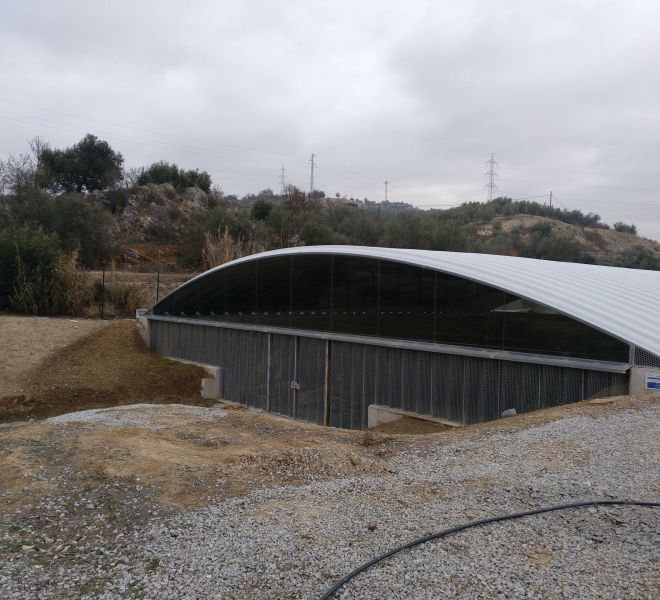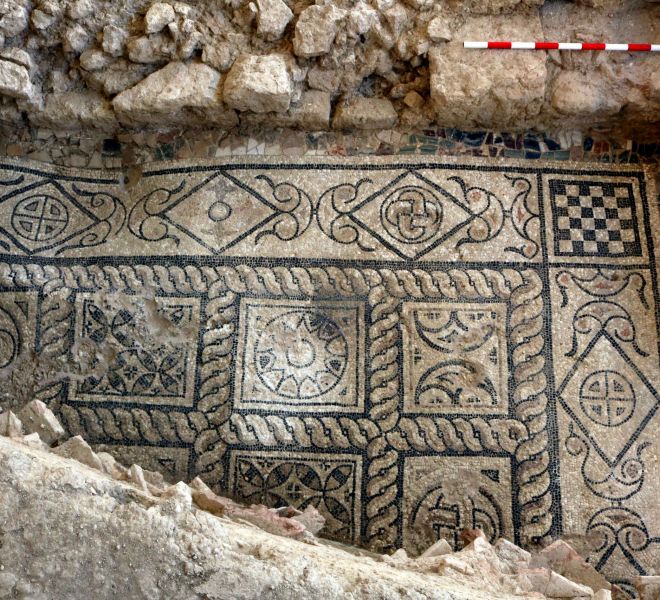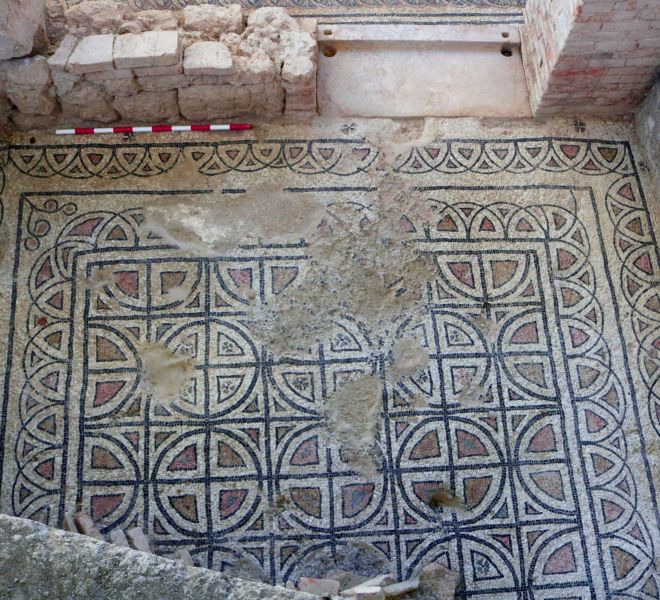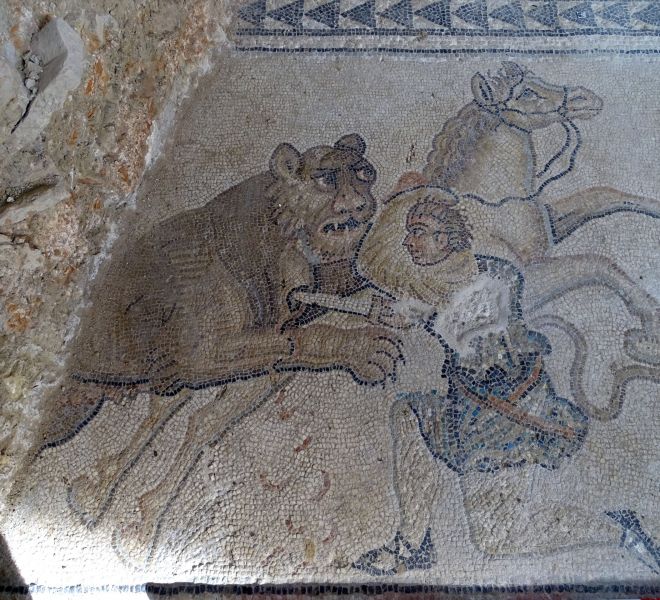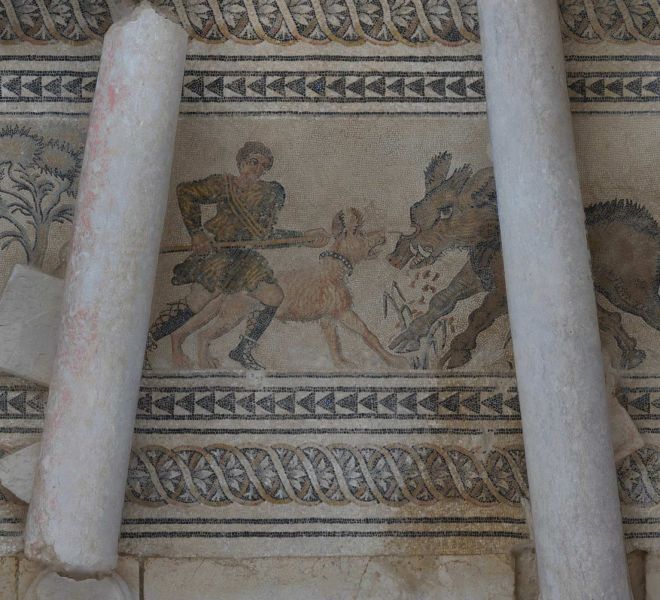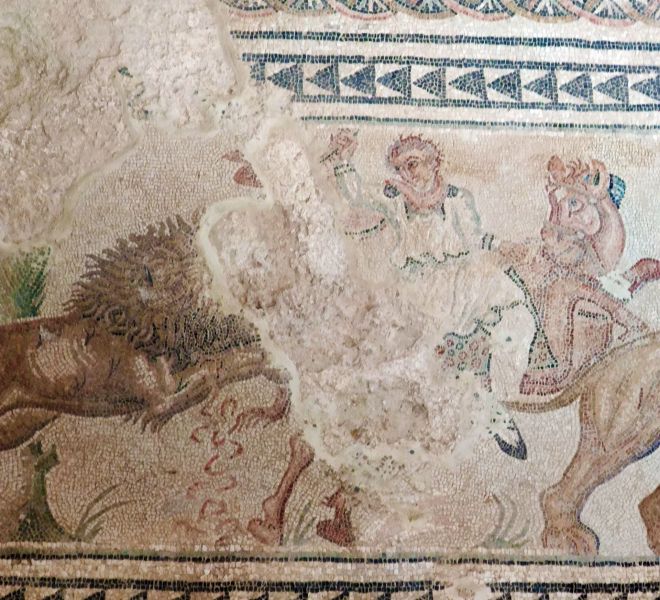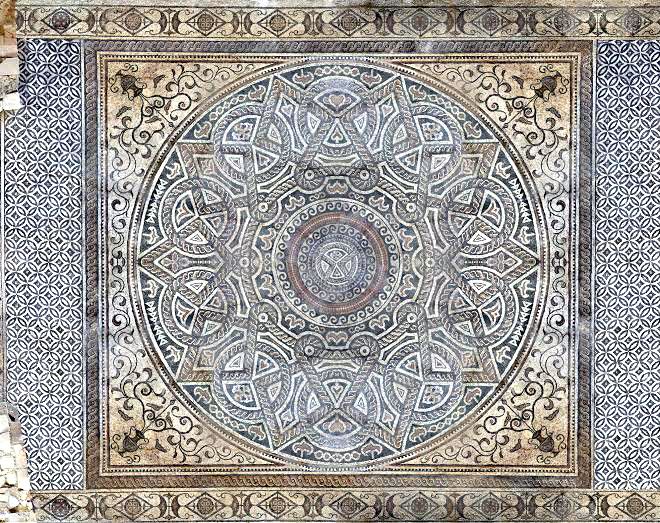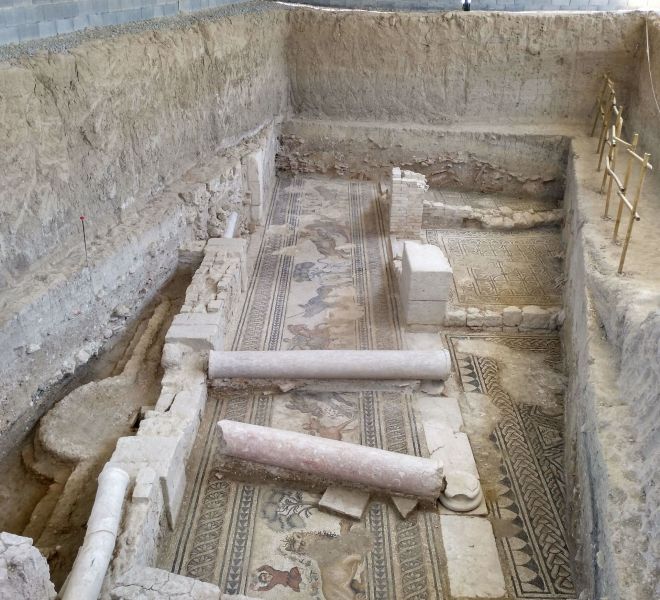“But the boar did Meleager, son of Oeneus, slay, when he had gathered out of many cities huntsmen and hounds; for not of few men could the boar have been slain, so huge was he; and many a man set he upon the grievous pyre.”
Homer, Iliad, Book 9, 544.
The roman villa of Salar is placed in the municipality of the same name at the west of Spanish Granada province, beside the most important communication route of the area, Genil river. This river was followed by the roman road between the roman city of Iliberris (Granada) and other roman cities placed in the fertile valley of the Guadalquivir river.
Discontinuous archaeological works carried out between 2006 and 2013, and steadily since 2016, have brought to light an important area of the ‘pars urbana’, that is to say, the dwelling of the owner, of a rich farming property, but there is still a great part of it to discover. That is why the historic and archaeological potential of the site is yet huge and hardly measurable.
As a peristylum villa, this countryside residence built during the 4th century over the foundations of an elder construction (1st century), is structured around a great peristylum or open central courtyard, square shaped, landscaped and dominated by a central monumental fountain. The courtyard was surrounded by four porticoed corridors that gave access to the surrounding rooms, as the triclinium-nimphaeum, the vaulted room or the rooms CE-10, CE-11 and CE-12.
Abandoned by their owners in the middle of the 5th century, the villa soon will be inhabited again by humble families, starting a period of reuse of rooms and pillaging of raw materials until the first half of the 6th century. At that moment, the property was definitely abandoned.
The rich decoration which adorns the rooms used by the dominus of the roman villa of Salar is composed by sculptures, mural paintings, marble skirting boards and mosaics both on the floors and walls. All of these elements indicate the economic power and the high social status of the family living here.
The roman villa of Sala is nowadays one of the most important recent discoveries of the roman period along the Iberian Peninsula. The good level of preservation of the structures, and their monumental character (especially its figurative polychrome mosaics, like the aristocratic hunting scene) place Salar among the best roman villas of Hispania, and comparable to any other across the roman empire.


